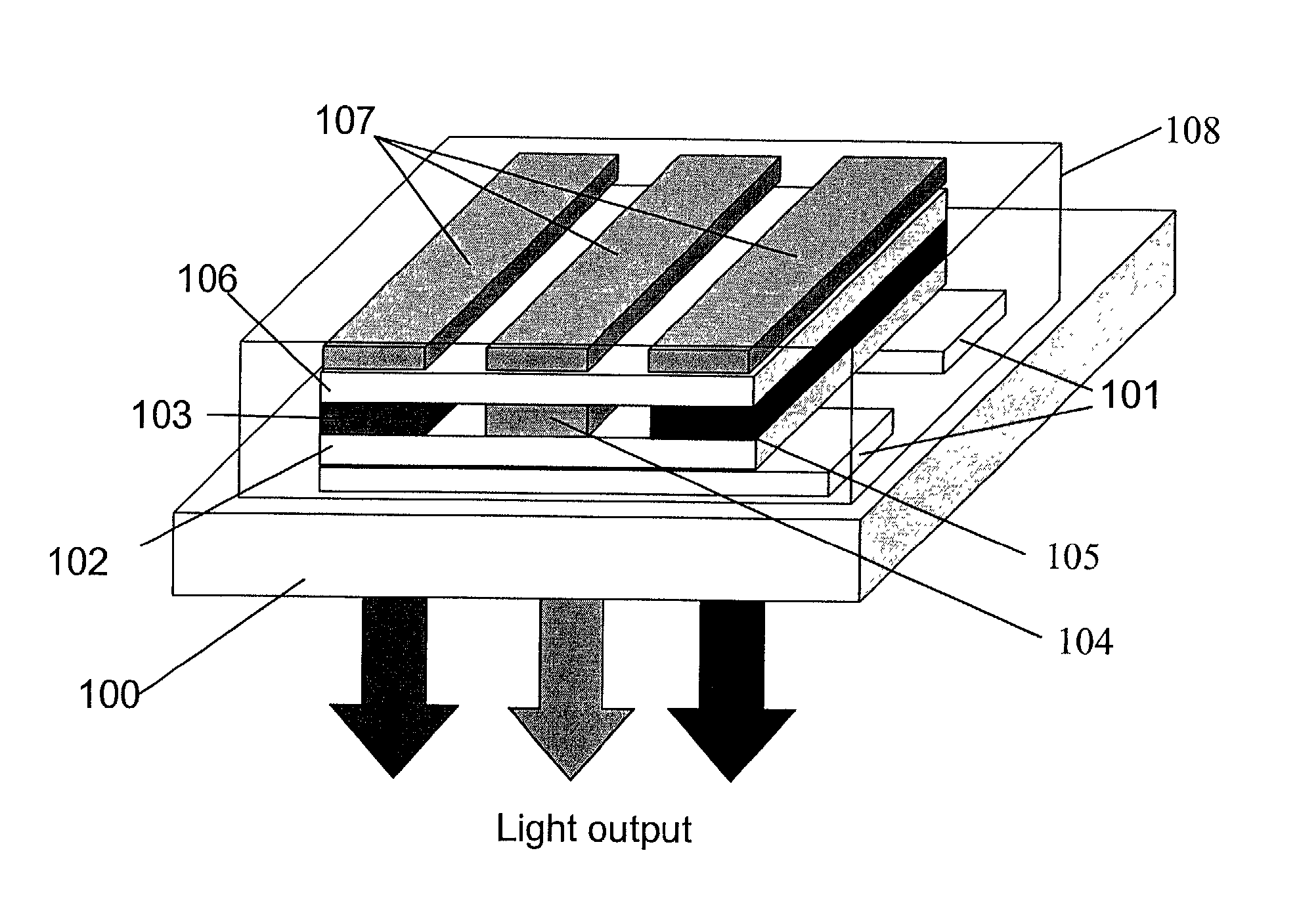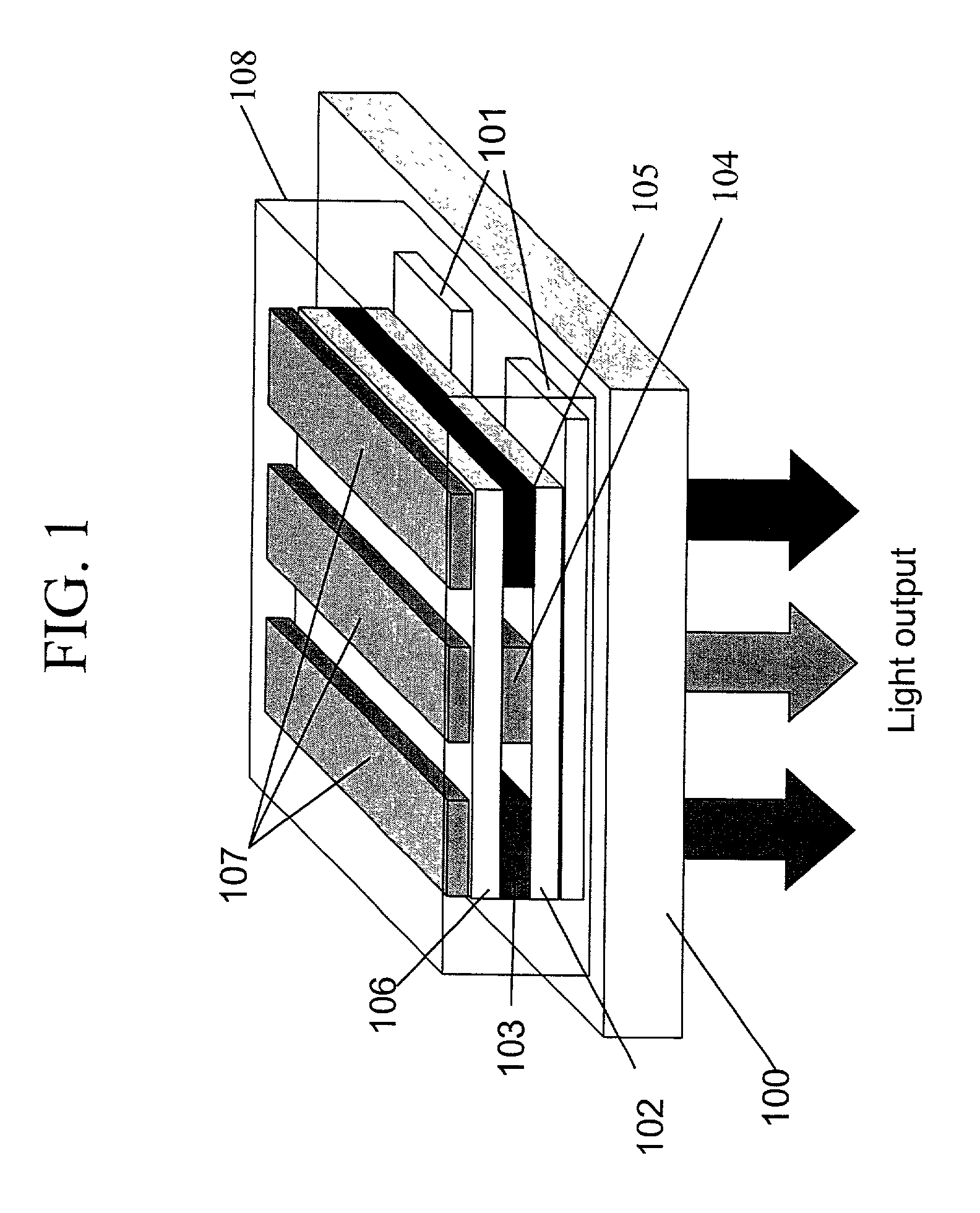RGB patterning of organic light-emitting devices using photo-bleachable emitters dispersed in a common host
- Summary
- Abstract
- Description
- Claims
- Application Information
AI Technical Summary
Problems solved by technology
Method used
Image
Examples
Embodiment Construction
[0029] For the fabrication of an organic EL display that has RGB color pixels sandwiched between two electrodes, the present invention utilizes a patterning method that: (1) employs a common blue emitting host material for all of the dopant emitting materials (note: dopant emitting materials can be either fluorescent or phosphorescent); (2) employs red and green dopants that are photo-bleachable, that is, they become non-emissive under a combination of the appropriate light source and oxygen; (3) may employ an additional blue emitting dopant that is not photo-bleachable; (4) may or may not use a mask during the photo-bleaching process; (5) minimizes the number of organic materials used; (6) minimizes the number of processing steps necessary for patterning the organic EL layer, thus simplifying the device structure; (7) reduces the risk of cross contamination; and (8) significantly reduces the costs of fabricating an organic EL display.
[0030] FIGS. 2A-D and 3 are illustrations of the...
PUM
| Property | Measurement | Unit |
|---|---|---|
| Metallic bond | aaaaa | aaaaa |
| Transparency | aaaaa | aaaaa |
| Wavelength | aaaaa | aaaaa |
Abstract
Description
Claims
Application Information
 Login to View More
Login to View More - R&D
- Intellectual Property
- Life Sciences
- Materials
- Tech Scout
- Unparalleled Data Quality
- Higher Quality Content
- 60% Fewer Hallucinations
Browse by: Latest US Patents, China's latest patents, Technical Efficacy Thesaurus, Application Domain, Technology Topic, Popular Technical Reports.
© 2025 PatSnap. All rights reserved.Legal|Privacy policy|Modern Slavery Act Transparency Statement|Sitemap|About US| Contact US: help@patsnap.com



